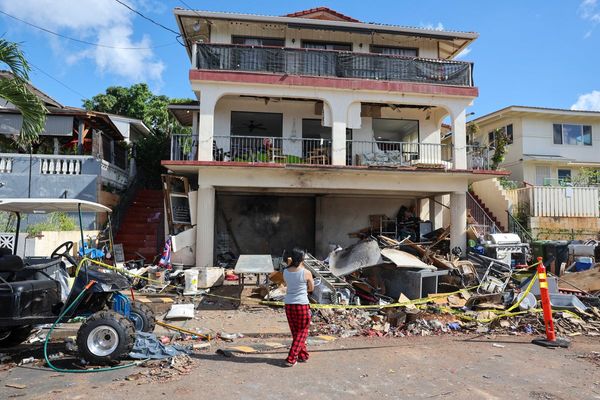Construction work is one of the most physically demanding and high-risk industries. Whether it's working on a skyscraper, building a road, or renovating a home, construction sites are filled with potential hazards that can lead to serious injuries or even fatalities. According to the Canadian Centre for Occupational Health and Safety (CCOHS), construction workers are particularly vulnerable to accidents such as falls, being struck by objects, and equipment-related injuries.
Ensuring the safety of workers is not just a legal and ethical obligation, but it’s also key to maintaining productivity and reducing the costs associated with workplace injuries. Here are the top safety tips for construction workers to help minimize risks and protect lives on the job.
1. Wear Proper Personal Protective Equipment (PPE)
Personal Protective Equipment (PPE) is your first line of defense against construction site hazards. Depending on the type of work being performed, construction workers should wear appropriate PPE, which can include:
- Hard Hats: Protects the head from falling debris or accidental impacts.
- High-Visibility Clothing: Ensures workers are visible to machinery operators and other workers, particularly in low-light conditions.
- Safety Boots: Steel-toed boots help protect against heavy objects and provide better traction to prevent slipping.
- Gloves: Essential for protecting hands from cuts, abrasions, and exposure to hazardous substances.
- Ear Protection: To protect hearing from loud noises, especially in areas with constant machinery or tool use.
- Eye Protection: Safety goggles or face shields prevent injuries from flying debris, dust, and chemicals.
Wearing the right PPE for the job can significantly reduce the likelihood of injury. It’s essential for all workers to regularly inspect their PPE and replace worn-out or damaged items.
2. Follow Fall Protection Protocols
Falls are one of the leading causes of injuries and fatalities in the construction industry. Whether you’re working on scaffolding, roofs, or near edges, it’s crucial to follow fall protection measures:
- Guardrails and Safety Nets: Install guardrails along open edges and use safety nets where guardrails are not feasible.
- Harnesses and Lanyards: Use fall arrest systems, including harnesses and lanyards, when working at heights. Ensure the equipment is properly maintained and fits well.
- Ladder Safety: Ensure that ladders are placed on stable, level ground and are inspected before use. Never use a ladder that is damaged or unstable.
By adhering to strict fall protection guidelines, workers can significantly reduce the risk of serious injuries associated with falls.
3. Be Aware of Hazardous Materials
Construction workers often encounter hazardous materials such as asbestos, lead, chemicals, and silica dust. Exposure to these materials can lead to long-term health problems, including respiratory issues, cancer, or skin diseases.
- Proper Ventilation: Use adequate ventilation when working in confined spaces or with hazardous materials.
- Safe Handling Procedures: Always follow the correct procedures for handling and disposing of hazardous materials. Use respirators or other protective gear when necessary.
- Training and Awareness: Workers should be properly trained to recognize, handle, and respond to hazardous materials. Awareness of the risks associated with these substances can prevent harmful exposure.
When working with hazardous substances, it’s important to follow all regulations and guidelines to protect your health and the health of others on the site.
4. Maintain Proper Equipment Use and Maintenance
Heavy machinery and tools are essential to many construction projects, but they can be dangerous if not used or maintained properly. Always ensure that:
- Equipment Operators Are Trained: Only qualified and properly trained individuals should operate heavy machinery like forklifts, cranes, or excavators. Inadequate training increases the risk of accidents.
- Routine Equipment Inspections: Machinery and tools should be regularly inspected for signs of wear or malfunction. If a tool or piece of equipment is damaged, it should be repaired or replaced immediately.
- Lockout/Tagout Procedures: Implement lockout/tagout procedures when maintaining equipment to prevent accidental startup during repair.
Proper training, maintenance, and safety procedures can help prevent equipment-related accidents, ensuring workers can safely use tools and machinery.
5. Communicate and Work as a Team
Effective communication is key to preventing accidents on a construction site. Workers should be able to communicate clearly with supervisors, coworkers, and machine operators to avoid dangerous situations. Key communication tips include:
- Use Signaling Systems: Use hand signals or radios for communication, especially when working around heavy machinery where noise levels are high.
- Teamwork: Workers should always look out for each other’s safety. A collaborative approach can help identify risks that one individual may overlook.
- Daily Safety Meetings: Hold safety briefings at the start of each shift to review potential hazards and discuss any new or ongoing safety concerns.
A culture of teamwork and open communication helps prevent misunderstandings and improves overall safety on the job site.
6. Be CPR Certified and Trained in First Aid
Accidents can happen even when all precautions are taken. In the event of an emergency, it is critical that workers are prepared to act quickly. First aid training in Hamilton is essential for anyone working in high-risk environments like construction sites.
Injuries such as falls, burns, or heart attacks may require immediate medical attention. Having CPR certified workers on-site ensures that someone can step in to provide life-saving care while waiting for emergency services. CPR can be the difference between life and death in situations where every second counts.
Additionally, first aid training equips workers to respond to minor injuries such as cuts, bruises, and sprains, helping prevent small injuries from escalating into something more serious.
For workers in Hamilton, first aid training is readily available through local training providers like Coast2Coast First Aid, which offers courses in CPR, basic first aid, and advanced trauma care. By ensuring that multiple workers are CPR certified and trained in first aid, construction sites can handle emergencies more effectively.
7. Keep the Worksite Clean and Organized
A cluttered worksite is an accident waiting to happen. Debris, scattered tools, and poorly stored materials can create trip hazards or lead to equipment malfunctions. To reduce risks:
- Keep Walkways Clear: Ensure that pathways are free of tools, materials, and debris to prevent trips and falls.
- Proper Material Storage: Store materials safely to prevent them from falling and causing injuries. Secure tall stacks and ensure heavy items are stored on lower shelves.
- Clean Up Spills Immediately: Whether it’s water, oil, or chemicals, any spill should be cleaned up as soon as it occurs to prevent slip hazards.
Maintaining an organized work environment ensures that workers can focus on their tasks without being distracted or put at risk by unnecessary hazards.
Risk Exposure
Construction work is inherently risky, but following basic safety protocols can dramatically reduce the chances of accidents and injuries. By wearing the proper PPE, adhering to fall protection measures, staying aware of hazardous materials, ensuring proper equipment use, and promoting effective communication, workers can stay safe on the job.
Moreover, CPR certification and first aid training in Hamilton are essential tools for any construction worker. These skills ensure that, in case of an emergency, you can act quickly and decisively to help your colleagues until medical professionals arrive.
Ensuring the safety of all workers on a construction site is a shared responsibility. By prioritizing safety through training, awareness, and preparation, you create a safer, more productive work environment for everyone involved.







